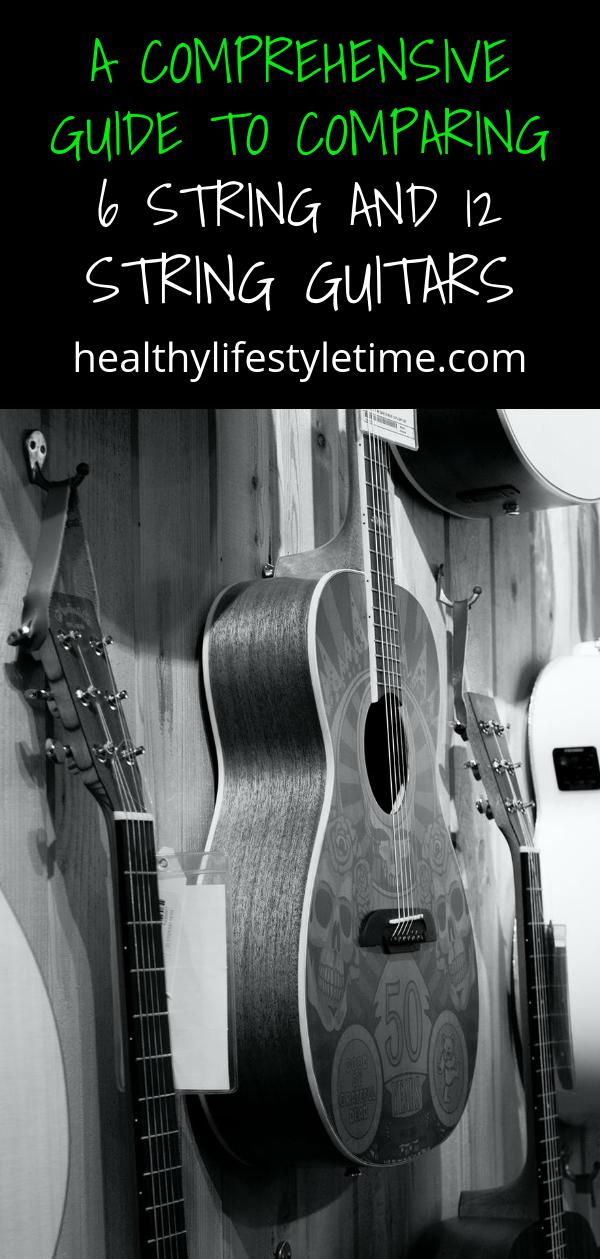6-string or 12-string Acoustic guitar, which should you get? Both have pros and cons, and both are excellent instruments, depending on what you’re looking to accomplish on guitar and how much you are willing to spend. In this article, we’ll go over both guitars, which will hopefully help you make an educated decision on which to purchase.
The Main Difference Between Both Guitars:

The major difference, of course, is the number of strings. On a 6-string Acoustic guitar in standard tuning, there is one low e, one a, one d, one g, one b, and one high e string, in that order. A 12-string acoustic has two low e, two a, two d, two g, two b, and two high e strings, all in that order. 12-string guitars have the ability to be tuned in two different tunings, while 6-string guitars don’t. On the other hand, 12-string guitars also have a lot more tension on their necks, and as a result, their necks tend to warp after only a few years of playing.
Which should I pick?
That’s a good question, and it depends on a few different things, all of which are discussed here:
The Advantages of a 6-String
To start with, 6-string guitars are much easier to learn than 12-strings are. This is because of the number of strings and how close together they are on the 12-string. It is nearly impossible to perform certain guitar techniques (like bends) on the 12-string guitar, and significantly harder to tune the guitar and change strings. Also, string picking is complicated by the number of strings. Thus, 6-string guitars are really ideal for those looking to play lead Acoustic guitar, that is, those who want to play a lot of individual notes (not just chords) and use guitar techniques like bends/slides/hammer-ons/pull-offs, etc. Beginners will also have an easier time learning to play guitar on a 6-string than on a 12-string, for the reasons mentioned above.
The Advantages of a 12-string
Despite what was said in the last paragraph, there are quite a few advantages to 12-string guitars. 12-string guitars produce a very rich, bright sound. This is because they have twice the number of strings as a 6-string does. Chords strummed on a 12-string guitar will sound a lot richer (better) than those strummed on a 12-string. Additionally, the 12-string guitar gives you the option of using two different tunings. You can’t do that on the 6-string. Beginners can learn to play 12-string guitars, but it will take a bit more practice to master than the 6-string. However, if you can master a 12-string, a 6-string guitar will be very easy to play.

What to keep in mind
Most musicians who use 12-string guitars use the 6-string guitar as their primary instrument. They usually pull out the 12-string when a song calls for a big, bright rhythm sound. So, if the songs you want to play feature mainly chords (and the songs call for a very rich sound) then a 12-string would be a good purchase, even if you are a beginner. The learning curve on a 12-string would obviously be steeper, but it would still be doable and worth it. If, however, you are looking to play songs with chords and individual notes, or simply want an instrument that isn’t as complex and difficult to learn, a 6-string guitar is your best bet. You might also want to consider cost. Good 12-string guitars are usually $100-$200 more than good 6-string guitars. If you’re on a budget, you’ll probably want to pick the 6-string guitar.





